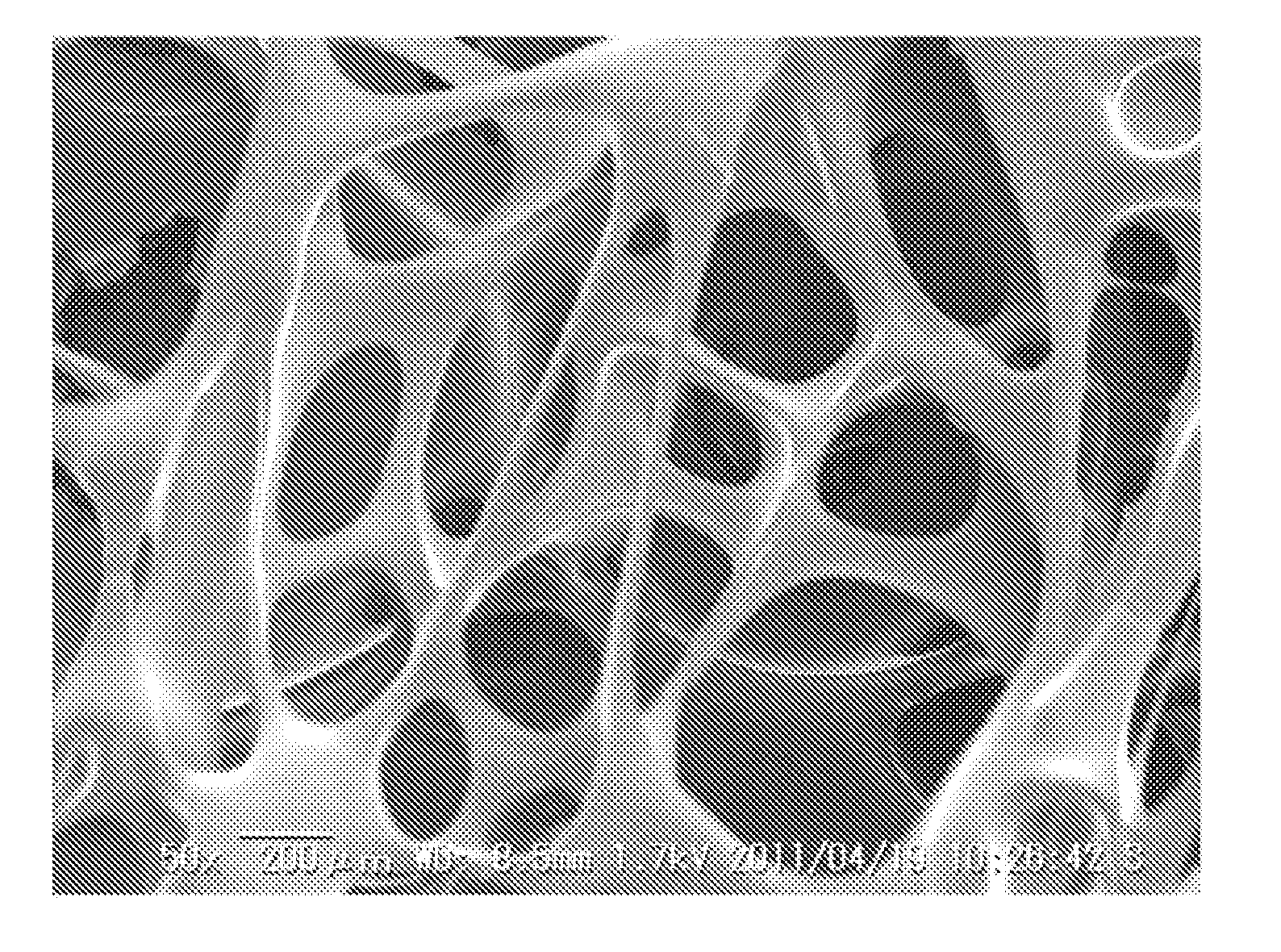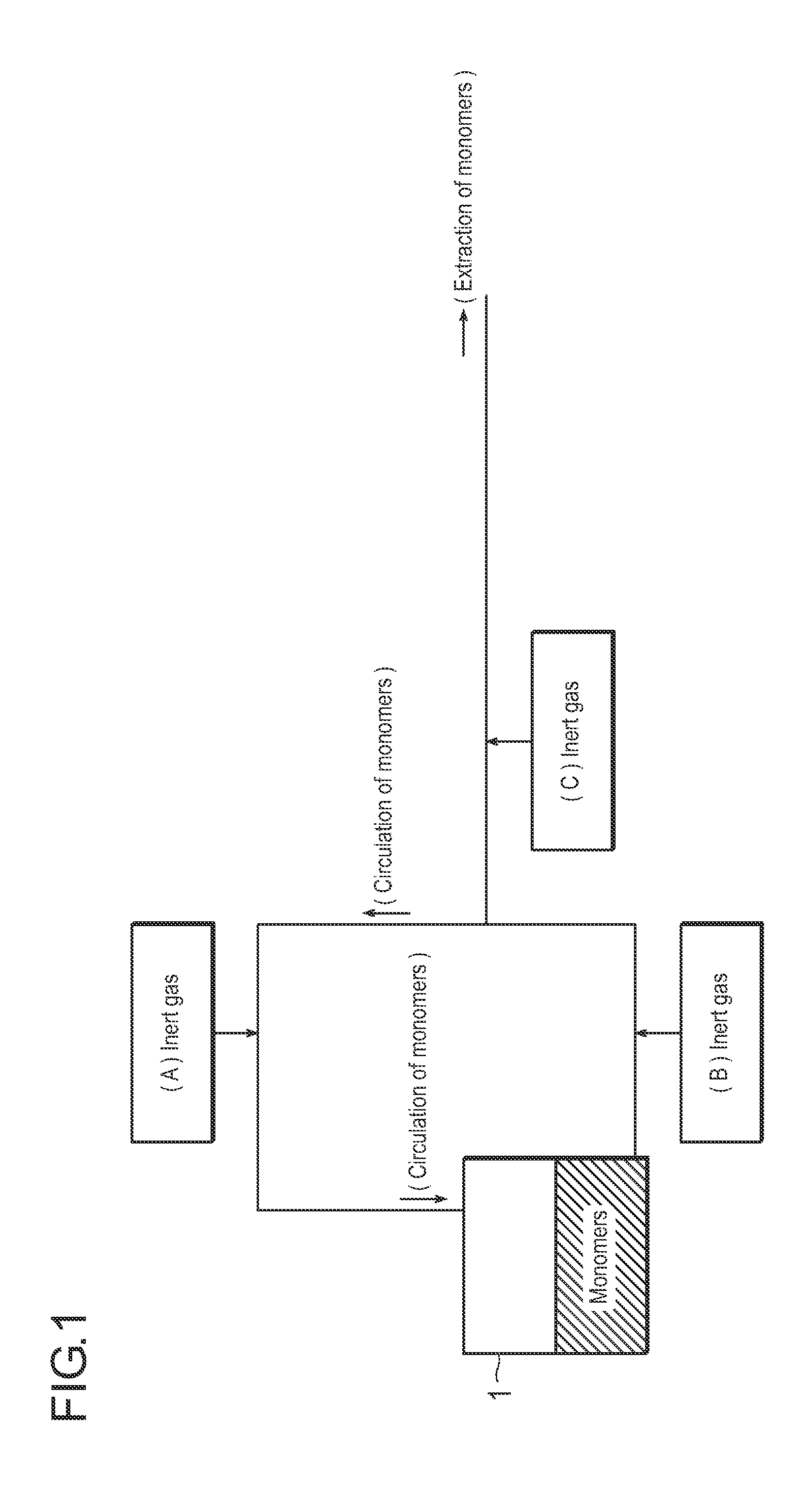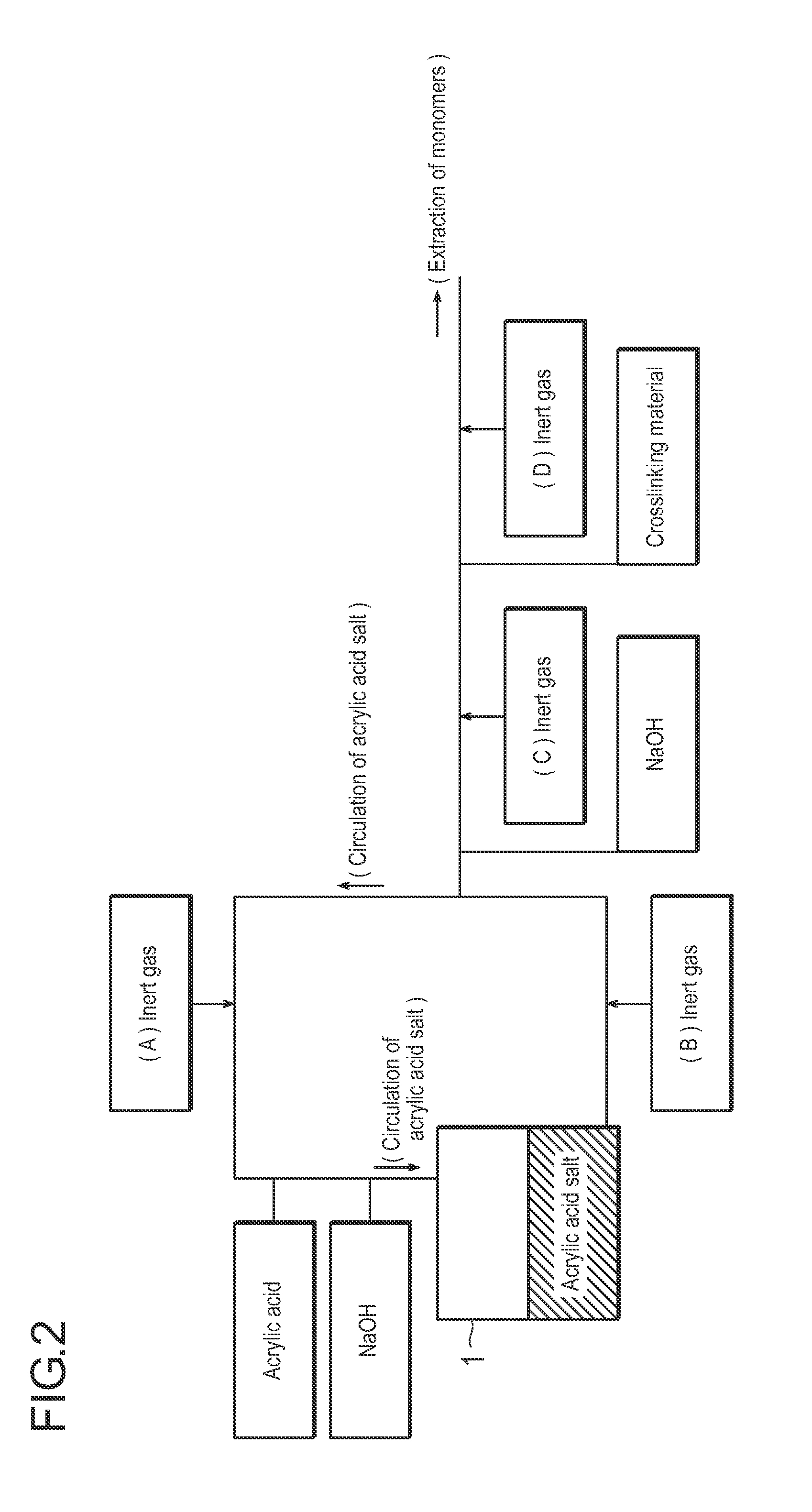Polyacrylic acid-type water absorbent resin and method for producing same
a technology of polyacrylic acid and water absorbent resin, which is applied in the direction of synthetic resin layered products, natural mineral layered products, metal layered products, etc., can solve the problems of affecting the liquid absorption characteristics of hygiene products, reducing the tension of body fluids, and requiring a relative long time for the dispersion of gas bubbles, etc., to achieve enhanced water absorption rate of water absorbent resins
- Summary
- Abstract
- Description
- Claims
- Application Information
AI Technical Summary
Benefits of technology
Problems solved by technology
Method used
Image
Examples
example 1
[0403]A solution (A) prepared by mixing 224.0 g of acrylic acid in which the p-methoxyphenol content was adjusted to 70 ppm, 0.48 g of polyethylene glycol diacrylate (number average molecular weight 522), and 0.13 g of 2-hydroxy-2-methyl-1-phenyl-propan-1-one, and a solution (B) prepared by diluting 153.8 g of a 48.5 wt % aqueous solution of sodium hydroxide with 113.2 g of ion-exchanged water, and adding 0.03 g of pentasodium diethylenetriamine pentaacetate as a chelating agent to the dilution, were respectively prepared. Subsequently, the solution (A) was mixed with the solution (B) under stirring with a magnetic stirrer, while heat was removed from the solution (B) in an open system. Thus, an aqueous monomer solution (1′) at 45° C. was obtained.
[0404]Next, 4.4 g of a 30 wt % aqueous solution of polyoxyethylene sorbitan monostearate (manufactured by Kao Corp.) was added to the aqueous monomer solution (1′), and the mixture was stirred. Thus, an aqueous monomer solution (1) was obt...
example
Addition of a Step of Uniforming Gas Bubbles
[0413]The same operation as that carried out in Example 1 was carried out, and thereby an aqueous monomer solution (2) (monomer concentration: 53.2% by weight, volumetric expansion factor: 1.4 times) containing gas bubbles of nitrogen gas dispersed therein was obtained.
[0414]Thereafter, the same operation as that carried out in Example 1 was carried out, except that while nitrogen gas was further continuously incorporated, the aqueous monomer solution (2) was circulated, and uniforming gas bubbles was carried out (see FIG. 1). Thus, a foamed polymer (2) was obtained. At the time of polymerization, after about 40 seconds from the initiation of polymerization, the maximum arrival temperature recorded 107° C. Furthermore, the open gas bubble ratio of the foamed polymer (2) was 12%, and the independent gas bubble ratio was 14%. Furthermore, the foamed polymer (2) had numerous fine gas bubbles, and formed a steamed bun-like white foam gel due ...
example 3
Volumetric Expansion Factor: 1.3 Times
[0419]The same operation as that carried out in Example 1 was carried out, except that as compared to Example 1, the use amount of the 30 wt % aqueous solution of polyoxyethylene sorbitan monostearate (manufactured by Kao Corp.) was changed from 4.4 g (Example 1) to 0.80 g (the content per monomer was 0.09% by weight), and also, simultaneously 2.65 g of hydroxyethyl cellulose (Wako First Grade / manufactured by Wako Pure Chemical Industries, Ltd.) was added to obtain an aqueous monomer solution (3) (monomer concentration: 53. 5% by weight, volumetric expansion factor: 1.3 times). Thus, a foamed polymer (3) was obtained. At the time of polymerization, after about 40 seconds from the initiation of polymerization, the maximum arrival temperature recorded 107° C. Furthermore, the open gas bubble ratio of the foamed polymer (3) was 10%, and the independent gas bubble ratio was 11%. Furthermore, the foamed polymer (3) had numerous fine gas bubbles, and...
PUM
| Property | Measurement | Unit |
|---|---|---|
| Temperature | aaaaa | aaaaa |
| Temperature | aaaaa | aaaaa |
| Fraction | aaaaa | aaaaa |
Abstract
Description
Claims
Application Information
 Login to View More
Login to View More - Generate Ideas
- Intellectual Property
- Life Sciences
- Materials
- Tech Scout
- Unparalleled Data Quality
- Higher Quality Content
- 60% Fewer Hallucinations
Browse by: Latest US Patents, China's latest patents, Technical Efficacy Thesaurus, Application Domain, Technology Topic, Popular Technical Reports.
© 2025 PatSnap. All rights reserved.Legal|Privacy policy|Modern Slavery Act Transparency Statement|Sitemap|About US| Contact US: help@patsnap.com



